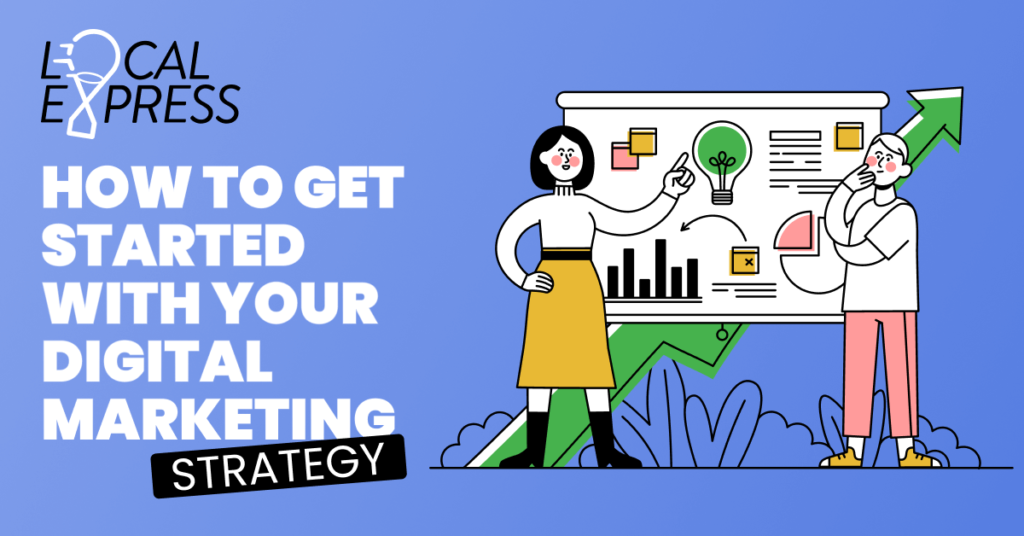
It’s official. Eating in is the new dining out. The appetite for one-click delivery services and at-home gourmet dinners has only grown since Covid-19 turned the world digital.
The next generation of food retailers will only grow their customer base if they jump on the latest trends and set a strong focus on digital marketing.
A strong online presence has never been more important for delis and restaurants. This blog will help you get started on your digital marketing strategy and show you how to attract new customers, so you can make your mark in the digital culinary world.
Get Started on Your Ecommerce Website
The first step is to create a website with eCommerce functionality. Why? Because allowing your customers to seamlessly order food or make reservations online will help you find new customers in no time. And it’s crucial for retaining your most loyal shoppers too.
Focus on building a clear and consistent website structure that makes it easy for customers to find exactly what they are looking for. For example, product lines should be classified by categories and item hierarchy. Looking for examples of best practices? Get inspired with Seafood City’s well-organized eCommerce website.
Next, you want to make sure that your website is visually appealing and reflects your store or restaurant’s brand. Choose a fully customizable website CMS provider that will allow you to insert your logo, adjust the page’s colors, and get a fancy layout to grab the attention of your customers.
Lastly, don’t forget what experience you set out to give to your online customers. Are you going to offer online reservations or is your proposition immediate home delivery? Your website functionality needs to match your customer conversion goals. For example, real-time payments are vital if you want to offer a fast delivery service, whereas user log-in functionality will be required if you want to offer a customer loyalty program.
So, before you go all-in with one website model, be sure to check out all the possible software integrations at your disposal.
Create Social Media Content
The second thing you’ll need to do is get started with social media. With social media, you can attract all those Gen Z and millennials foodies – not only because they are the online demographic, but because they tend to research their food choices on social platforms as well.
You can use the power of social media and create organic content. Post images and videos of your products and services, and behind-the-scenes stories, and share exclusive offers, discounts, or recipe tips to build your online community.
The old saying “we eat with our eyes first” is just as important online as ever. The images of your food, dishes, and products must be pleasing to look at. Bay Area grocer Berkeley Bowl relies upon Local Express’s cache of high-quality images in addition to photos taken by their in-house photographer.
You can also use promotional posts and targeted ad strategies to complement your organic content strategy and boost engagement even further. When it comes to promotions, Community Food Market’s Facebook is leading by example. They update special offers weekly which invites their clients to come buy and get their unique discounts.
By running ads on Instagram, Facebook, or other social media channels, you can increase the likelihood that your promotion is recognized by customers and users who might otherwise be out of your reach. Always keep your ad texts short, simple, and engaging, and include a call-to-action. Those should seduce your customer to visit your page or order a product, such as: “Buy 2, get 1 free”.
Personalize Your Online Customer Experience
With players like Spotify and Netflix making a fully personalized user experience the norm, it’s no wonder that customers now expect the same seamless experience across all digital services.
But don’t panic just yet. It’s possible to sell your products online without trying to be the Netflix of the grocery world. Start easy with a platform that enables your customers to choose their products or menus according to their individual wishes.
For example, if you are focused on food product delivery, give your customers the chance to customize order amounts or a preferred time window for the delivery to arrive.
Building an online shopping experience where customers feel as if they are in-store is possible with easy-to-implement technological solutions. Integrating a Point of Sale (POS) system allows you to collect historical customer data and analyze their shopping habits. Based on this data, you can craft personalized emails, special menu offers, and offer discounts on items that they’re looking for.
Now that you’re fully up to speed on how digital marketing techniques can support your journey to eCommerce, there’s no reason to wait. Head over to our blog on POS integrations to enhance your digital marketing skills further.











